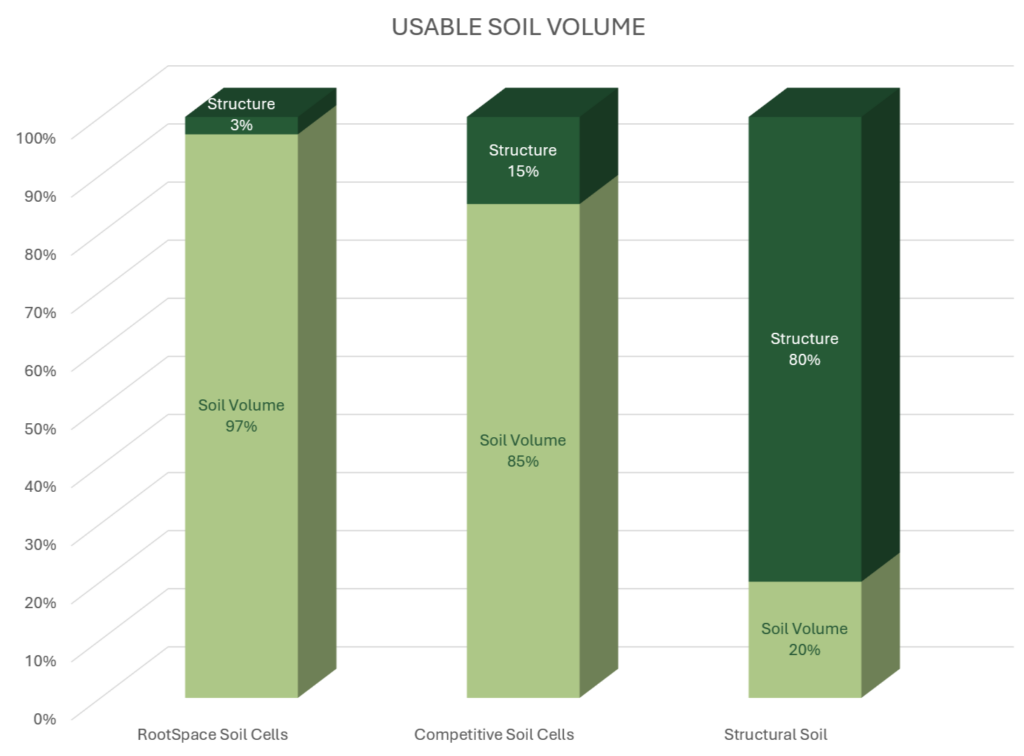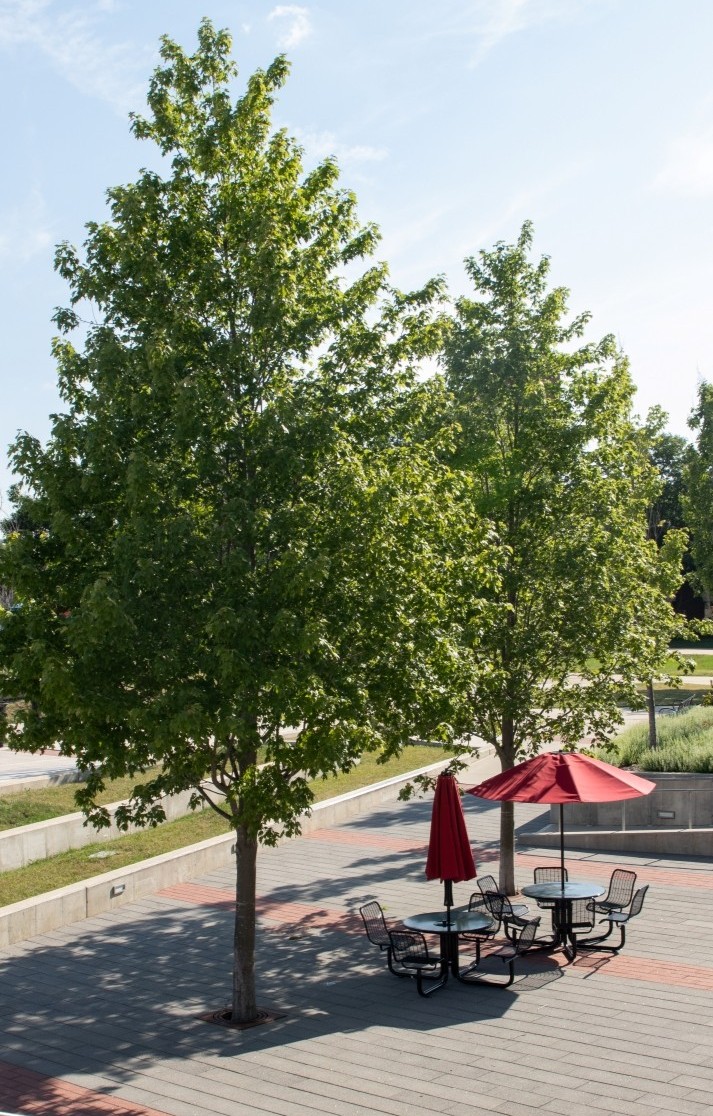When selecting soil cells for urban tree planting projects, there’s a common misconception that deeper cells are inherently better. But is depth really the most important factor? At GreenBlue Urban, we believe it’s time to shift the conversation from cell dimensions to what truly matters: usable soil volume.
Container vs. Content
We’ve all experienced this in everyday life: like when ordering a soda at a fast-food restaurant, only to find the cup filled mostly with ice. Despite it being a “large”, you’re actually getting the same amount of liquid as a medium with less ice. What matters is the actual beverage you receive, not the dimensions of the cup.
Similarly, consider luxury cosmetics packaging – those elegant jars of premium face cream that reveal thick walls and false bottoms when opened. The packaging appears substantial, but the actual product volume is surprisingly small compared to simpler designs that hold the same amount.

These everyday examples perfectly illustrate the soil cell dilemma. Competitive post-and-base systems may appear substantial due to their depth. But those very structural posts, like ice in your drink or the thick walls of a cosmetics jar, displace valuable soil that tree roots need to access. The size creates an illusion of more growing medium. In reality, substantial portions of that space are unusable for the tree.
Often, soil cell manufacturers provide the volume of the cell system rather than the actual volume of soil. This can be misleading and frustrating, especially when a specific soil volume is required or desired. For an accurate number, be sure to check that the soil volume provided excludes the volume of the structure or system itself.

The RootSpace Advantage: Lattice Structure vs. Post-and-Base
The innovative lattice structure of RootSpace dramatically increases usable soil volume by minimizing structural components that block root growth. Unlike post-and-base systems where large vertical posts occupy space that could otherwise hold soil, our lattice design creates an open matrix that maximizes the area available for root development.
The result? RootSpace cells deliver 97% usable soil volume. That’s 7-12% more usable soil volume than competitive systems of comparable depths. This means you can cut costs, either of the amount of soil cell system, or during the excavation with a smaller footprint.

But What About Strength?
You might be wondering: “Do those posts in other systems contribute to structural strength? After all, soil cells need to support pavement and vehicle traffic.”
Actually, the lattice structure of RootSpace makes it the strongest soil cell on the market. Our innovative design distributes loads more efficiently than post-based systems, resulting in superior strength testing results across all measures of performance.

The engineering principle at work is similar to how a geodesic dome can support tremendous weight despite using less material than traditional building methods. It’s not about mass, but about intelligent distribution of forces.
Real-World Cost Savings
Let’s look at how this translates to practical benefits with our most common RootSpace configurations:

RootSpace 600 & 1000 are shallower than the corresponding competitive cell depths yet hold the same amount of soil per square foot. This means:
- Less excavation depth required
- Reduced installation time and costs
- Easier installation in sites with depth constraints
- The same amount of growing medium for trees despite the reduced depth
RootSpace 400 & 800 are comparable in depth or slightly deeper than corresponding competitive cells and hold more soil per square foot. This allows you to:
- Can install a smaller footprint while achieving the same soil volume
- Maximize tree health in narrow or cramped spaces
- Reduce overall project costs through smaller excavation areas
- Accommodate more utilities around the tree pit

The Bottom Line: Volume of Soil, Not Volume of Cells
When evaluating soil cell systems, the question shouldn’t be entirely about “What size is it?” but rather “How much soil does it actually provide?”
RootSpace’s design philosophy prioritizes what trees need most – soil volume, not just structural dimensions.
For your next urban tree planting project, consider the efficiency of your investment. Are you paying for space that roots can’t access, or are you maximizing every cubic inch for healthy root development?
Choose RootSpace for more soil, stronger trees, and better project economics, without excavating more than necessary.
